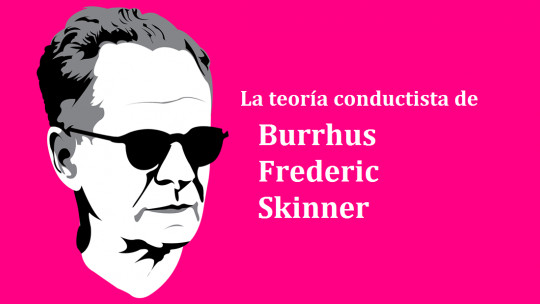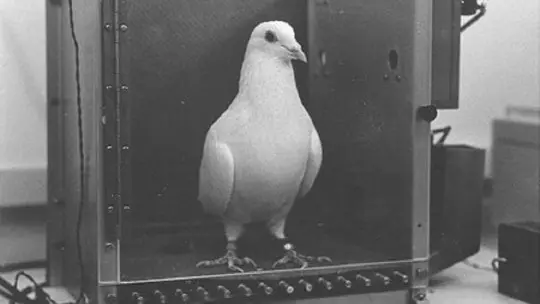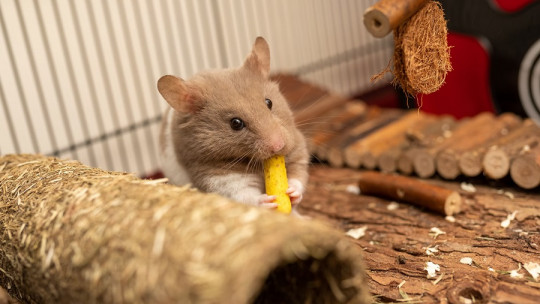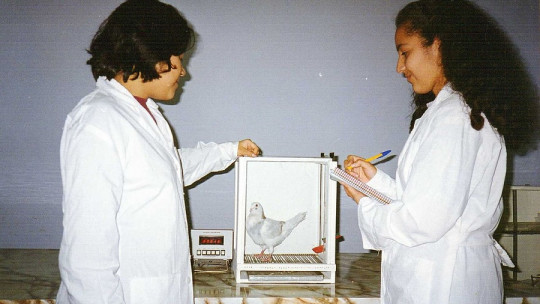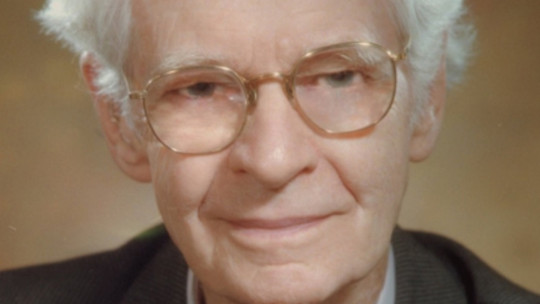
It seems obvious to think that, if after performing a certain behavior we receive a prize or reward, we are much more likely to repeat it. Behind this principle, which may seem so obvious to us, there is a whole series of hypotheses and theories studied and debated throughout the history of psychology.
One of the main defenders of this approach was Burrhus Frederic Skinner, who through his Reinforcement Theory tried to give an explanation to the functioning of human behavior in response to certain stimuli.
Who was BF Skinner?
Psychologist, philosopher, inventor and author. These are just some of the occupations attributed to the well-known American psychologist, Burrhus Frederic Skinner. He is considered one of the leading authors and researchers within the behaviorist current of North America.
One of his main objects of study was human behavior. Specifically, he sought to explain how it worked in response to different stimuli that can influence it.
Through experimental manipulation and observation of animal behavior Skinner outlined his first theories about the role that reinforcement has in behavior, creating from these the principles of the theory of operant conditioning.
For Skinner, the use of so-called positive and negative reinforcement It was vital to modify both human and animal behavior; either to increase or enhance certain behaviors or to inhibit or eliminate them.
Likewise, Skinner was interested in the practical applications of his theories; creating “programmed education”. In this type of educational process, a series of small cores of information are explained to the students that they must learn consecutively in order to move on to the next core of information.
Finally, Skinner also gave rise to a series of essays surrounded by some controversy in which he proposed the use of psychological techniques for behavior modification with the aim of increase the quality of society and thus reinforce people’s happiness as a kind of social engineering for the happiness and well-being of men and women.
What is reinforcement theory?
The theory of reinforcement developed by Skinner, also known as operant conditioning or instrumental conditioning, attempts to explain human behavior in correspondence with the environment or stimuli that surround it.
Using the experimental method, Skinner concludes that the appearance of a stimulus triggers a response in the person. If this response is conditioned using positive or negative reinforcers, an influence can be exerted on said reaction or operant behavior, which can be enhanced or inhibited.
Skinner established that behavior is maintained from one context or situation to another as long as the consequences, that is, the reinforcers, do not change or do so following certain logic, “rules” that must be discovered. Due, both human and animal behavior can be conditioned or modified using a series of stimuli that the subject may consider satisfactory or not.
Explained in a simpler way, Reinforcement Theory emphasizes that a person is more likely to repeat a behavior that is positively reinforced, just as they will be less likely to repeat those that are associated with negative stimuli or reinforcements.
What types of reinforcement exist?
Conditional stimuli or reinforcers, both positive and negative, can be used with the purpose of rectifying or changing the person’s behavior. These They are very useful both in psychological therapy and in the school environment family or even work.
Skinner differentiated between two types of reinforcers: positive reinforcers and negative reinforcers.
1. Positive reinforcers
Positive reinforcers are all those consequences that appear after a behavior and that the person considers satisfactory or beneficial. Through these positive or satisfactory reinforcers, the aim is to increase a person’s response rate, that is, to increase the probability of performing or repeating an action.
This means that acts that are positively reinforced will be more likely to be repeated since gratifications, prizes or rewards perceived as positive are followed by the person performing the action.
It is very important to highlight that for this association to be effective, it must be ensured that the person considers positive reinforcement as such. That is, it should be really attractive to you.
What one person may consider a reward does not have to be one for another. For example, a child who is rarely given candy may perceive them as a more important reward than another who is accustomed to them. Therefore, It will be necessary to know the particularities and differences of the person in order to be able to specify what the ideal stimulus will be to serve as a positive reinforcer.
In turn, these positive reinforcers can be classified into the following categories:
3. Negative reinforcers
Contrary to what is popularly believed, negative reinforcers do not consist of administering punishments or aversive stimuli to the person; If not the opposite. The use of negative reinforcers seeks to increase the response rate by the elimination of those consequences that it considers negative.
For example, a child who studies for a certain test and gets a good grade. In this case, the parents exempt him from doing any household chores or any activity that he finds unpleasant.
As we can see, unlike positive reinforcement, in this case the appearance of a negative or aversive stimulus is eliminated to increase a certain behavior. However, what they do have in common is that the stimuli will also have to be adapted to the person’s tastes.
Skinner’s reinforcement programs
As mentioned at the beginning of the article, in addition to theorizing about human behavior, Skinner sought to put these theories into real practice. To do this, he developed a series of specific reinforcement programs, the most notable being the continuous reinforcement and intermittent reinforcement programs (interval reinforcement and ratio reinforcement).
1. Continuous reinforcement
In continuous reinforcement the person is constantly rewarded for an action or behavior. The main advantage is that the association forms quickly and effectively; However, once the reinforcement is removed, the behavior also quickly extinguishes.
2. Intermittent reinforcement
In these cases The person’s behavior is only reinforced on certain occasions. This program is in turn subdivided into two categories: interval reinforcement (fixed or variable) or ratio reinforcement (fixed or variable).
In interval reinforcement, the behavior is reinforced after a previously established period of time (fixed) or a random period of time (variable). While in reason reinforcement the person has to carry out a certain number of behaviors before it is reinforced. As in interval reinforcement, this number of responses can be previously agreed upon (fixed) or not (random).
Criticisms of Skinner’s theory
Like all areas of study and research, Skinner’s theory is not exempt from criticism. The main detractors of these hypotheses accuse Skinner of not taking into account the circumstances around which the behavior occurs, therefore creating a theory too reductionist when based on the experimental method. However, this criticism is replicated by drawing attention to the fact that the experimental method is about putting the focus of attention not on the individual, but on the context, what happens in the environment.



